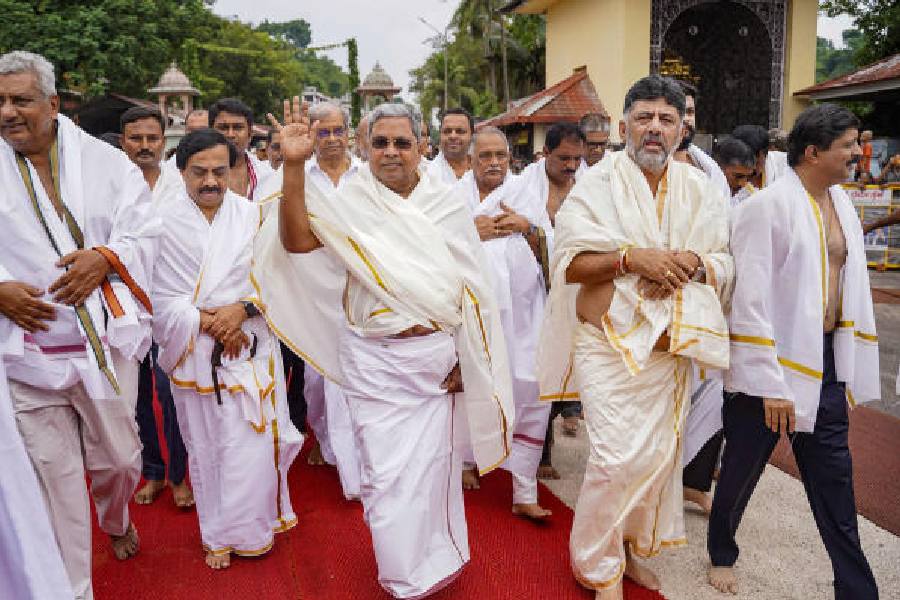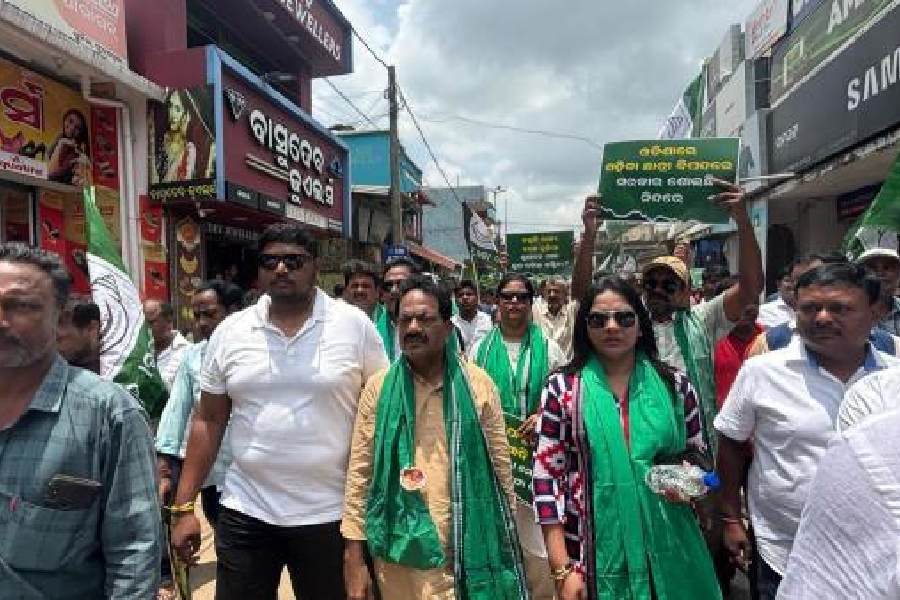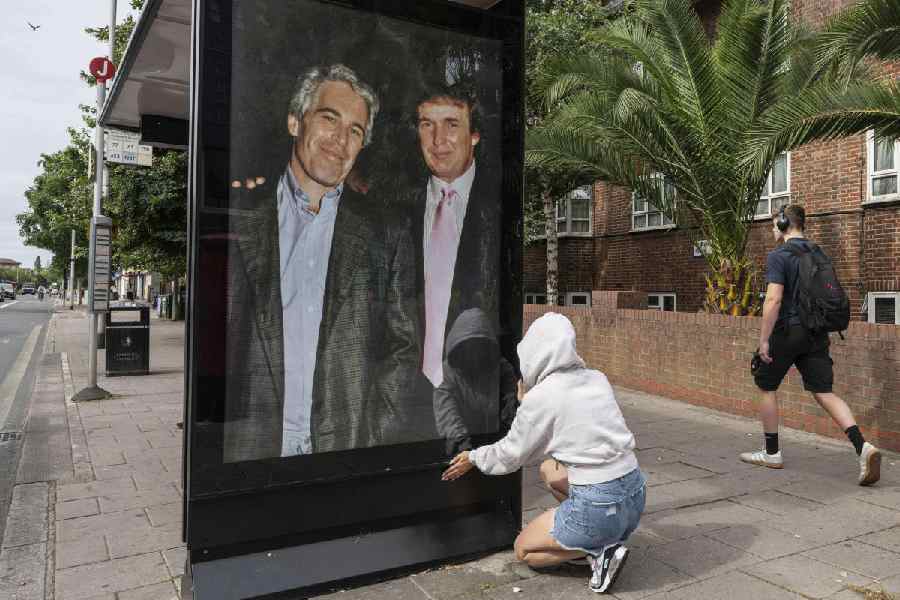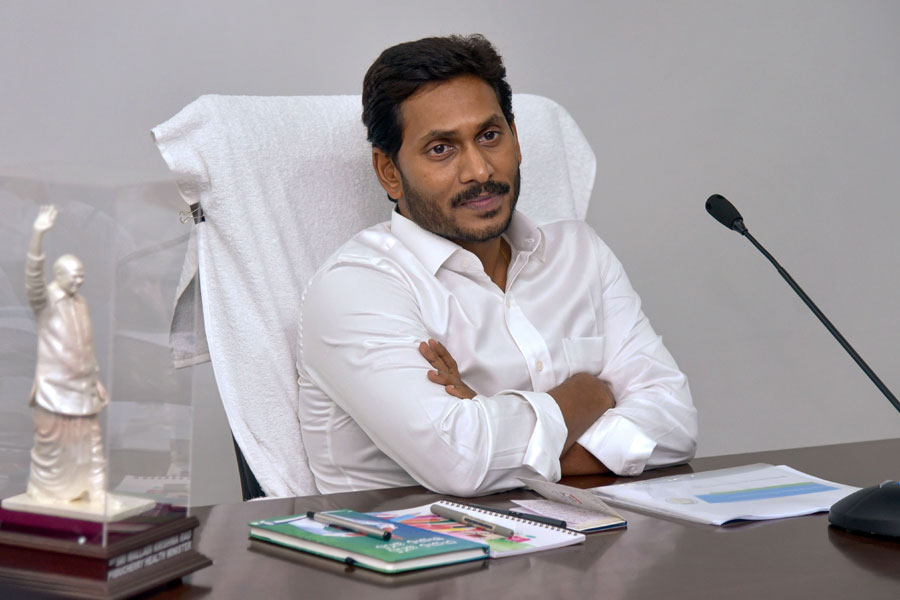|
|
Beyond Credos: Painting in Baroda Today (until March 4 at the Birla Academy) brings together the latest work of 28 “middling and younger generation painters” based in Baroda. Its curator, Shivaji K. Panikkar, is an art historian at the city’s M.S. University, and most of these artists teach at, or have graduated from, its faculty of fine arts. What, if anything, unites these individuals? The narrative and figurative traditions practiced in Baroda in the Seventies and Eighties have “shifted drastically”, according to Panikkar, towards a “broader, more open-minded pictorial vocabulary”. This is largely, the curator seems to think (rather simplistically), owing to some eminent faculty members’ “study/ stay/travel” in Europe.
Trying to work out ways in which artists living in the same city “negotiate” among themselves or devise “strategic uses of often ironic classicisms” is ultimately unhelpful. All good painters are self-consciously allusive, and talk silently to one another across time and space. It is better, therefore, to keep academic twaddle out of shows like this, and provide, instead, basic information about the artists (perhaps with a brief history of the city in which they all live), hang the pictures in an interesting sequence, and let viewers work out their own connections. Panikkar’s curating is obtrusive and jargon-ridden, marred by a catalogue riddled with abominable printing mistakes, which spill over — unforgivably — into the captions to the paintings as well.
If one walks past the right-minded sermons on extinct species or ruined greens (Vasudevan Akkitham, Lokesh Khodke) and on genocide (M. Sashidharan), and past Heeral Trivedi’s tacky-mythological tributes to Basanti Debi and Joan of Arc, then there are some striking pictures to linger with at this exhibition. Sharmi Chowdhury’s oil, Super Time (wrongly identified in the catalogue), enacts a comic-grotesque masquerade in a fantasy theatre with men, monkeys and a sad woman in white. She mentions the influences of Gaganendranath and Benodebehari; but Manjit Bawa, Frieda Kahlo and Bhupen Khakhar — the presiding genius of the ‘Baroda School’, though far transcending that rubric — are the other important presences. (Isn’t Khakhar the white-haired, bespectacled man seen from behind in Ashutosh Bhardwaj’s trendily hyper-real Exploring One’s Own Credos?) Next to her, is Anjum Chaturvedi’s gesso-on-wood triptych, Olfactory Nostalgia 1.2.3. These three hanging, nose-shaped cabinets with little keys and clock-faces displayed in them evoke the worlds of Max Ernst’s witty caprices and of Dalí’s The Persistence of Memory. Saumya Ananthakrishna’s The Incomprehensible Horror of a Beautiful Sunny Day, is a diptych in oil of “a bird that constantly seems to want to fly towards its own death”. She uses Islamic architectural motifs, but her panoramic vista, the cold light in which everything appears sharply etched, and the clear shadows produced by this light come out of the European-Surrealist universe of De Chirico and, again, Dalí. Indrapramit Roy’s watercolour, Deep Dusk, is an understated and sophisticated triptych of a Titanic-like ship in the night, mysteriously following the unravelling of a blue silk ribbon through what looks like a murky-green, underwater forest.
Perhaps the most memorable paintings in this show are by Satyanand Mohan and Abir Karmakar. Mohan’s oil, First Love Painting #2 (picture), depicts the tutti-frutti, Wizard-of-Oz world of a girl and a boy walking through a starlit landscape. They are human automata, their bodies riddled with holes (like cheese) that give them a look of timeless fragility. Karmakar’s huge, untitled oil is a ruthless self-portrait, painted with an unnerving exactitude reminiscent of the work of Lucien Freud. As a challenge to accepted notions of masculinity, it is more directly confrontational than Ajay Sharma’s clichéd send-up of Indian machismo, Homage to Whitman. Karmakar’s male odalisque — with his smooth, sagging flesh and bloodshot, deadpan eyes — risks the melodrama of gender variance, but puts it in place through the photographic clarity of the surrounding objects: the cutwork table-cloth, the dying tube-roses, the hair-dryer and a mug that says ‘Mom’.











